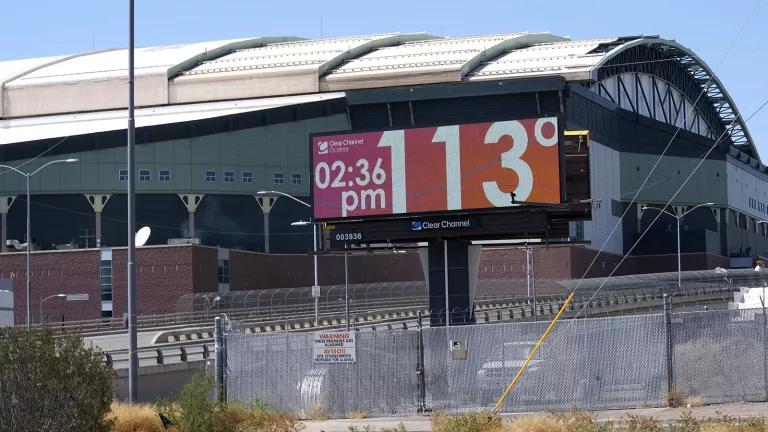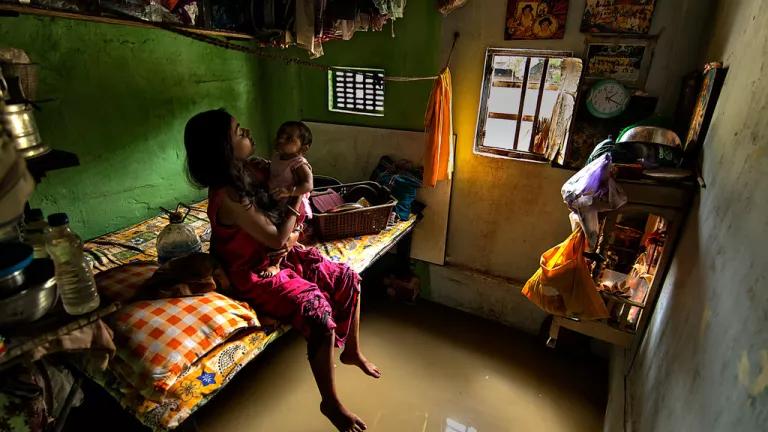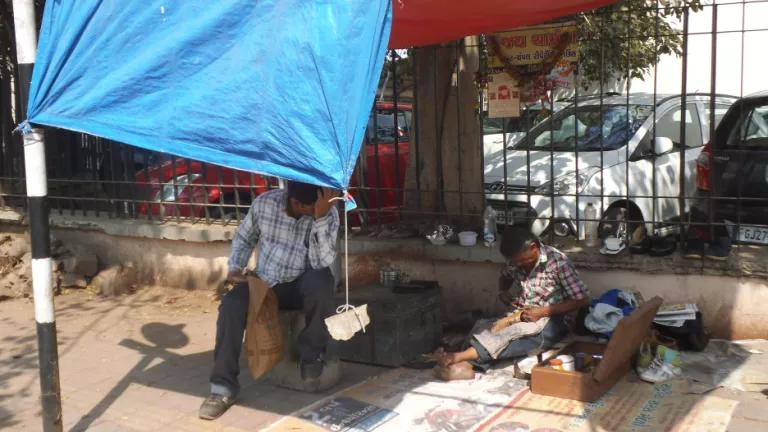Changing the Climate for the Vulnerable: Call for Action
As the world looks to step up efforts to cut greenhouse gas emissions to avert catastrophic climate change, across the world hundreds of millions of people with a negligible carbon footprint continue to suffer the devastating effects of ever more frequent extreme weather events.
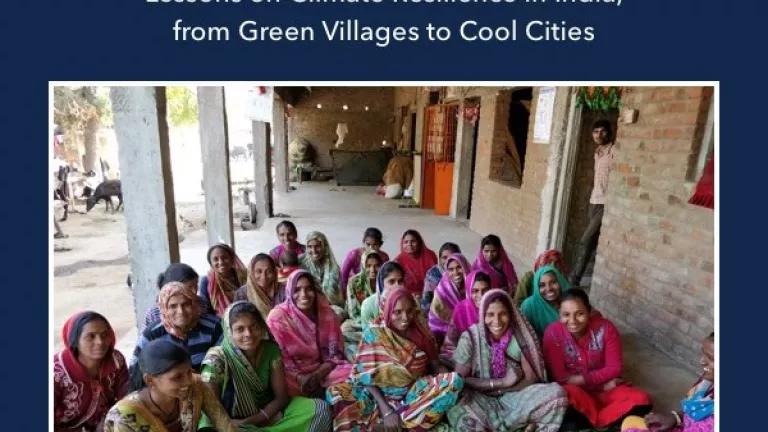
As the world looks to step up efforts to cut greenhouse gas emissions to avert catastrophic climate change, across the world hundreds of millions of people with a negligible carbon footprint continue to suffer the devastating effects of ever more frequent extreme weather events. In a clarion call for action, the UN’s new Adaptation Gap Report 2021 asks for ramping up action for strengthening climate resilience—the main topic of discussion at a panel discussion Changing the Climate for the Most Vulnerable: Lessons on Climate Resilience from Green Villages to Cool Cities in India organized by NRDC, and partners the Indian Institute of Public Health Gandhinagar (IIPH-G) and the Self-Employed Women’s Association (SEWA) at COP26 today.
Be it the global pandemic or global warming, the most vulnerable across the world are unequivocally the most impacted. The most vulnerable in India have been struggling for survival against the onslaught of multiple stressors, including climate, health, poverty, and social inequities. Since 2020 alone, there have been increasing incidences of extreme heat, cyclonic storms, floods, landslides and even locusts. Fueled by climate change, heatwaves and other extreme weather events are longer, more frequent, and more intense. More than 20 million people were affected in India by climate related hazards in 2020—the largest affected population in Asia.
Climate policy that centers around the most impacted, and that leads to real action to help alleviate their conditions, is the need of the hour. The good news is the solutions exist, and states and cities in India are taking action. The side event highlighted the success stories in building climate resilience particularly focused on the most vulnerable in India.
Key messages emerging from the discussion include:
- The number of people most vulnerable to climate are staggeringly high all over the world. India is particularly vulnerable to climate impacts and nearly 8 out of 10 Indians are vulnerable to extreme climate risks, as per a recent CEEW analysis. The question of equity in the carbon space remains and should be addressed.
- There is a clear need for increased focus on climate adaptation and equity as those on the frontlines of resilience have the least political voice. A more holistic whole government approach both at national and international levels is required to address climate resilience.
- Clean energy is not just empowering but can also be lifesaving in extreme weather conditions. Renewable energy can be transformative in improving the lives and livelihoods of people by creating employment opportunities right to the village level.
- When it comes to global fund flows, the development and resilience divide is artificial. Integrating climate risk into development programs is essential and it must be addressed by at all levels of government. A revolution in knowledge, planning and financing is required. Both public and private finance are important and have different roles to play. While we need public finance, it will not be enough by itself—private finance has to come along too.
- Local level support and action is most critical for climate resilience. This however needs to be supplemented by national and international support. Robust communication systems at the local level such as alerting systems with well-defined standard operating procedures can protect against hazards, reduce impact and build resilience.
- Women-focused green livelihood options, that are designed with a holistic and integrated approach including skilling, capacity building, access to finance, are an important component of equity and justice in climate solutions.
- The multiple stressors of climate, health and poverty can actually be tackled together with integration of climate adaption into development plans and programs and with vertical integration across governance
With the promise of scaling the work on green villages, Association of Renewable Energy Agencies of States (AREAS), Ministry of New and Renewable Energy (MNRE), India signed an MoU with NRDC to expand renewable energy to all parts and all communities in India.
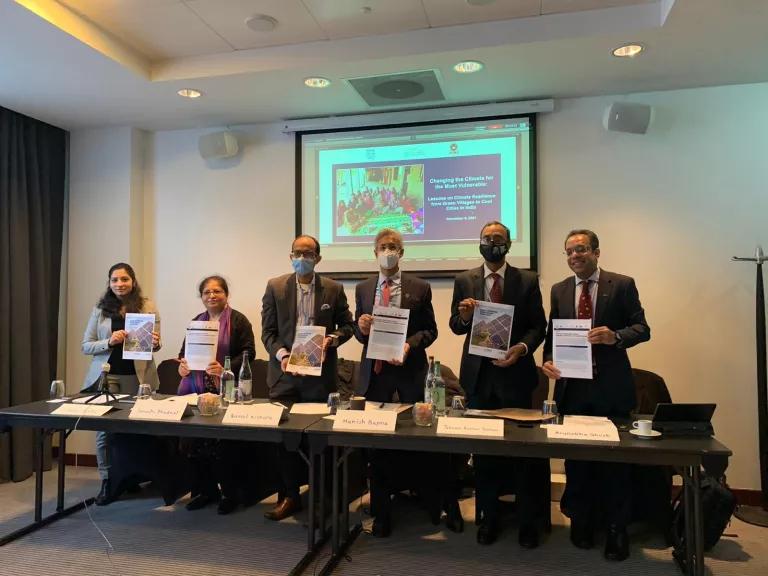
Distinguished speakers at the side event on climate resilience (right to left, Arunabha Ghosh (CEEW), Jeevan Jethani (MNRE), Manish Bapna (NRDC), Kamal Kishore (NDMA), Reema Nanavaty (SEWA-virtual), Dileep Mavalankar (IIPH-G, virtually), Suruchi Bhadwal
New Reports on Climate and Green Jobs
NRDC and partners released two new reports at the event.
India’s Road from Paris to Glasgow: NRDC and partners—the Administrative Staff College of India (ASCI), the Council on Energy, Environment and Water (CEEW), Indian Institute of Public Health - Gandhinagar (IIPH-G), the Self Employed Women’s Association (SEWA) and The Energy and Resources Institute (TERI) released a summary of India’s climate journey since the Paris Agreement in 2015 and includes an assessment of India’s new climate goals announced this month.
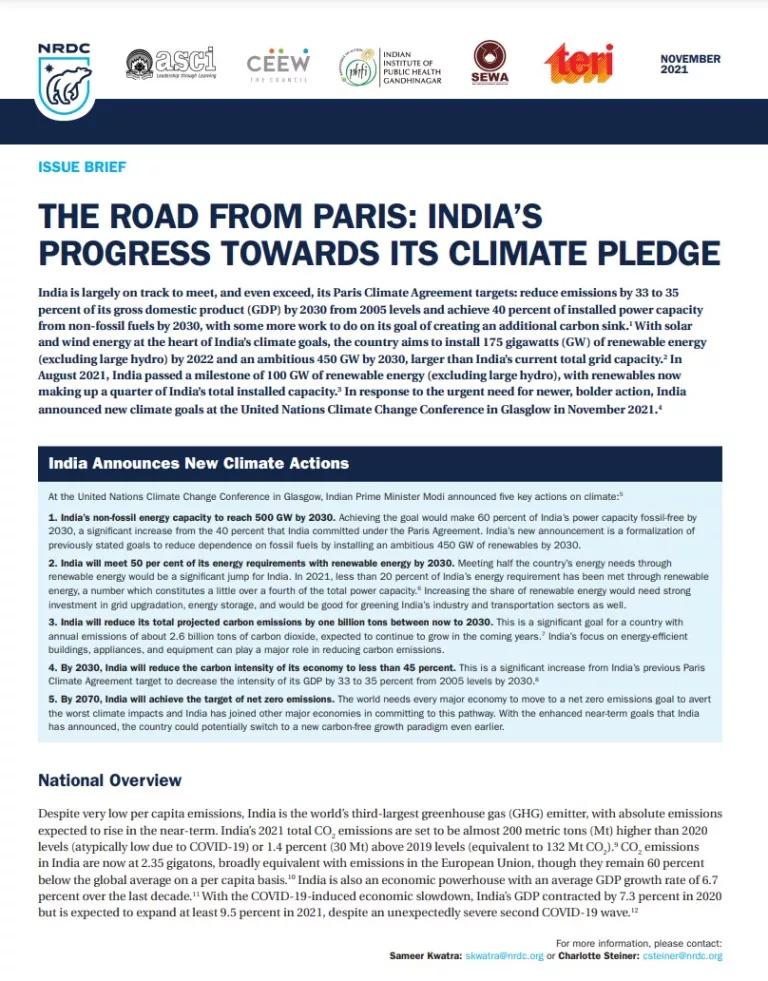
NRDC's New Report on India's Climate Actions
India’s Expanding Clean Energy Workforce: Opportunities in the Solar and Wind Energy Sectors
This report presents the first-ever analysis of employment opportunities from India’s new solar and wind energy goals. India can create about 3.5 million jobs (short and long term) by installing 280 GW solar and 140 GW wind capacity out of the 500 GW non-fossil electricity generation capacity goal by 2030.
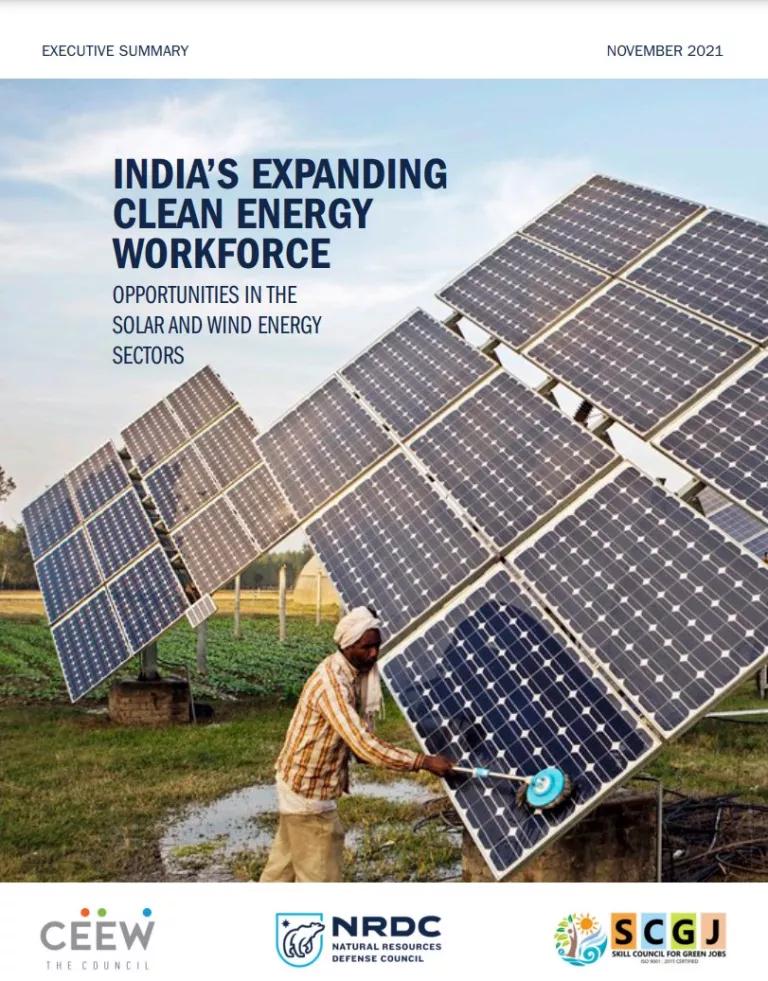
NRDC's New Report on Clean Energy Jobs
In case you missed it, a recording of the entire discussion is available here.
Prima Madan is a cooling and efficiency expert working as a consultant with NRDC.



